By James I. Marino
Despite the Nazi conquest of European nations during World War II, individual soldiers from the occupied countries rose again to fight the German Army, and the largest army in exile to fight the Germans was Polish. Polish forces fought in North Africa, on the Eastern Front, in Western Europe, and on the Italian peninsula.
The Polish II Corps carried the fight to the Axis during the Italian Campaign. Thousands of former Soviet prisoners and scattered exiles provided the bulk of the corps. The Polish soldiers traveled a long, hard road to fight in Italy. British Field Marshal Bernard Montgomery wrote in his memoirs, “Poles played a part which gained them the admiration of their comrades and the respect of the enemy.”
According to Polish historian Michael Alfred Peszke, “The Polish Army from the Soviet Union is the keystone to the history of the Polish endeavor in World War II.”
Major General Wladislaw Anders and the Polish Armed Forces
Following the Soviet occupation of eastern Poland in 1939, some 1.5 million Polish citizens found themselves arrested and transported to Soviet labor camps and prisons. After the Nazis struck Russia, British diplomats led by Foreign Secretary Anthony Eden indicated to the Soviets that the exiles could provide a potent source of manpower for the antifascist struggle. On July 30, 1941, the leader of the Polish government in exile, General Wladyslaw Sikorski, reached an agreement with the Soviets. Poles residing on Russian soil after September 1939 were allowed to join the Polish armed forces, responsible only to the Polish government and led by Polish officers.
Major General Wladislaw Anders was given command of the proposed army. Born in a Russian-controlled area of Poland, he graduated from high school in Warsaw and continued on to Riga Technical University. In 1913, he joined the Russian Army and entered the cavalry school. During World War I, he commanded a cavalry unit and was wounded five times. In 1917, he studied at the Academy of the General Staff in St. Petersburg. Then he took part in the formation of the Polish Corps, under General Jozef Dowbor-Musnicki. After the surrender of Germany, he returned to Poland in 1918 and joined the Polish Army and became chief of staff of Greater Poland. During the Russo-Polish War in 1920, he directed the Poznań Uhlans. He entered the Ecole Superieure de Guerre in Paris and became the military commander of Warsaw in 1925. In 1932, he led the Polish team riding in the equestrian competition of the Nations Cup in Nice.
Between 1928 and 1939, Anders commanded the cavalry brigades based in eastern Poland. He fought against the Wehrmacht in September 1939. After fighting along East Prussia, his cavalry task group marched south toward Hungary and engaged the Red Army invading Poland on September 17. Wounded, the Soviets captured him, and the NKVD (Soviet Secret Police) imprisoned him in Lubyanka Prison and later in Lwów.
Released after 18 months of captivity, Anders was tasked to form the Polish Army in the Soviet Union. He distrusted all things Soviet and later wrote in his autobiography, “God only knows how many were murdered and how many died under the terrible conditions in the prisons and forced labor camps.”
The Making of a New Polish Armed Forces
The communist government refused to allow the Polish soldiers to head to Britain to join the units forming there. Soviet Premier Josef Stalin would only open the gulag gates to provide soldiers for his own army. The Soviets noticed two clear attitudes among the Poles: disdain for everything communist and complete trust between the soldiers and officers.
By November 1941, there were 40,000 Polish men at arms, 60 percent without boots, numerous Polish women, and hundreds of children to be cared for. The Soviets reduced the food rations. Most of the welfare aid for the gathering Polish citizens came from over 800 American charitable services, which enabled the Poles to set up 105 schools and 58 old people’s homes in Russia. By March 1942, the army’s strength reached 67,500 soldiers.
By April 1942, approximately 26,000 Polish veterans were organized into two divisions in Uzbekistan under the command of Anders, but the communists provided only 8,651 rifles and 16 artillery pieces. After long political wrangling and a direct appeal from British Prime Minister Winston Churchill in a letter dated July 17, 1942, Stalin finally agreed to allow the Poles to move to Iran as part of the Allied occupation force there. Anders led an exodus of 112,000 men, women, and children. Unfortunately, over 4,000 soldiers died in Russia waiting for Stalin’s permission.
From Iran, the Poles moved to Iraq and came under British command for further training and equipping. By August 1942, an additional 44,000 soldiers and 26,000 civilians, refugees and exiles from around the world, joined them. Although the majority of these were ethnic Poles, there were also members of other nationalities who joined the units of II Corps, most notably Jews, Belarusians, and Ukrainians.
Historian Thomas Brooks noted in The War North of Rome, “Anders matched his men in fighting spirit and toughness of mind and body, with a fiery Polish patriotism.“
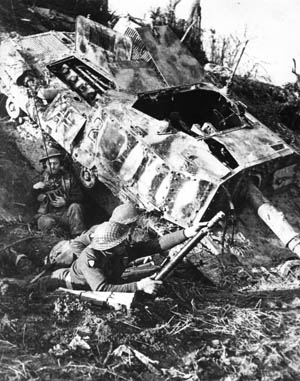
The Polish eagle became a prominent decoration on British-supplied helmets throughout the corps. When their training ended in June 1943, American General George S. Patton, Jr., reviewed the Polish soldiers and described them as “the best looking troops, including the British and American, that I have ever seen.”
Polish Troops to the Mediterranean
At the Quebec Conference in August, Roosevelt and Churchill decided to send the Polish Corps to Italy. Churchill wrote to Chief of Staff General Sir Alan Brooke, “The time has come to bring the Polish troops into the Mediterranean theatre. The men wish to fight. The intention is to use them immediately.”
After Polish Prime Minister Sikorski died in a plane crash at Gibraltar, Anders became the focus of Polish nationalistic pride and fervor. To his countrymen Anders was an inspiration, and to his allies he was a military leader whose ability commanded the greatest respect.
Churchill wrote a second memo to Brooke: “There is an urgency for reinforcements in Italy and the need to bring the Polish Corps into operations. A lot of time and energy has been spent on the Poles who for two years have done nothing.”
Anders met Churchill at the British Embassy in Cairo on August 22. Churchill immediately liked Anders, while Anders extended trust and belief in the prime minister.
The Polish II Corps
The Polish II Corps became a major military formation of the Polish Army in World War II under the nominal control of the Polish government in exile in London. Its 3rd Carpathian Division was formed in the Middle East from Colonel Stanislaw Kopanski’s seasoned Carpathian Brigade, which fought at Tobruk and in Egypt. The 5th Kresowa was built around the staff of the 5th Division originally organized in the Soviet Union.
According to the British Army Act of 1940, Polish units were to be grouped in a single theater of war. The British completely equipped, organized, and trained the Polish units to British standards and organizational guidelines, but only after a direct order from Churchill to chief military assistant General Bruce Ismay, which read, “I regard the equipping of the Polish Corps as of the first importance and urgency.”
Manpower shortage meant that each Polish division would have only two brigades instead of the standard three in a British division, with skeleton staffs for their third brigades awaiting the recruiting of additional manpower. An armored brigade was formed with only 10 tanks, along with an independent infantry brigade that became the basis for a third division. To help solve the troop shortage, the Poles recruited Polish prisoners who had been forcibly recruited into the Wehrmacht.
In July and August 1943, the Polish II Corps moved to Palestine for final training. This consisted of maneuvers in the mountainous regions to acclimatize the troops to the terrain they would encounter in Italy. Prior to arriving in Italy, the Corps totaled 45,000 men. The 3rd Division included the 1st and 2nd Carpathian Rifle Brigades, and the 5th Division was composed of the 5th Wilenska and the 6th Lwowska Infantry Brigades.
The Corps’ divisional order of battle followed British lines with three field artillery regiments, an antitank regiment, engineers, a heavy machine-gun battalion, communications troops, an antiaircraft artillery regiment, and a reconnaissance regiment, the 12th Podolski Lancers in the 3rd Division and the 15th Poznanski Lancers in the 5th Division. The Corps’ 2nd Armored Brigade consisted of three armored regiments and supporting units. The 3rd Division had 13,200 men, the 5th Division 12,900, and the 2nd Armored Brigade 3,400. In 1944, the corps was transferred from Egypt to Italy and became part of the British Eighth Army under General Oliver Leese.
Keeping the Polish II Corps in Tact
There was concern as to how the corps would be utilized. The British wanted to augment their replacement pool with the Poles. Anders furiously rejected suggestions that his corps be broken up and attached to British and American divisions in battalion-sized units, but attempts to make up the corps’ manpower shortage with recruits from Polish communities in Canada and the United States failed miserably. The Soviets also refused to allow more Poles to leave the country.
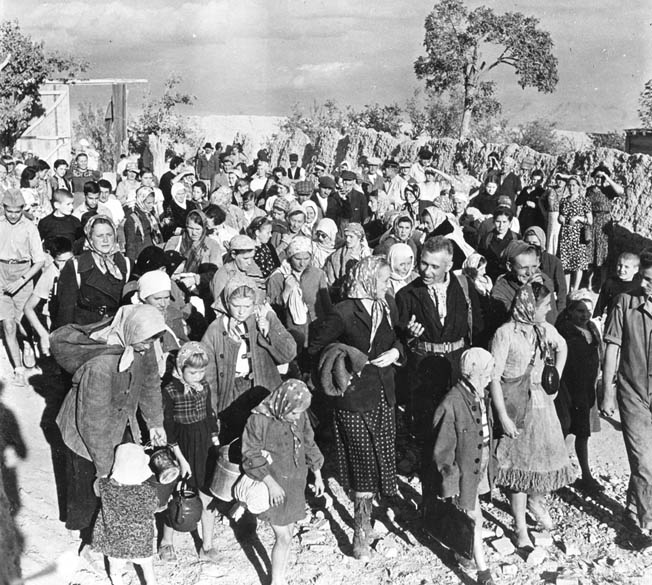
Anders proposed to send his corps into battle without a pool of replacements. The Poles would take “liberated” manpower to replace their losses and flesh out their incomplete divisions on the battlefield. Large numbers of ethnic Poles had been impressed into the Wehrmacht as ethnic Germans, and Anders believed they would gladly join him if given the chance. The Poles also had intelligence indicating that thousands of Polish prisoners had been sent to Italy as laborers. These men could also be freed and join the II Corps.
The British relented, and the Polish II Corps would fight as an autonomous unit. After arriving in Italy, the Polish corps eventually swelled to a force of 110,000. At age 52, Anders commanded Poland’s only force facing the Germans in Western Europe.
“They Seem to Know No Fear”
Elements of the 3rd Carpathian Rifle Division began landing in Italy at Taranto on December 21, 1943. The transfer of all Polish units from Egypt and the Middle East continued until the middle of April 1944. These troops landed at the Italian ports of Taranto, Bari, and Naples. Corps headquarters followed in January 1944, the 5th Kresowa Division in February, and the armored brigade in April. The 2nd Base Corps completed the move.
The first Polish unit to see action in Italy was the Independent Commando Company. On December 29, 1943, it took part in a diversionary raid with British No. 9 Commando on the Gariglianio River estuary defenses. The 3rd Carpathian Division entered combat along a quiet sector of the front on the Sangro River. On February 10, Lt. Gen. Anders reported to General Leese at Eighth Army headquarters at Vasto, and the Polish II Corps officially became part of Eighth Army.
British soldiers readily acknowledged the fighting spirit of the Poles. An Irish Guards officer in the 78th Division described his encounter with them. “Their motives were as clear as they were simple. They only wished to kill Germans and they did not bother at all about the usual refinements when taking over our posts. They just walked in with their weapons, asked where the Germans were, and that was that.” The 78th Division history carried a significant entry. “Of their resolve there was no doubt. For whose gallantry the Division soon learnt to feel an awed yet amused admiration. They exposed themselves with the most reckless abandon. They seem to know no fear.”
Battle of Monte Cassino: The Polish Corps’ Chance to Prove Itself
The 3rd Carpathian Division’s first patrol went out on February 21, northwest of San Angelo. In May it moved up to Monte Cassino, where the Poles proved their worth in capturing the destroyed abbey high atop a mountain that commanded the Allied approaches through the valley below.
The German defenses at Cassino had not been penetrated despite three assaults and heavy bombing. The enemy held fast and continued to block the road to Rome. In May, along the 18-mile stretch from Cassino to the Gulf of Gaeta, 17 Allied divisions stood ready for the next phase of battle. After previous attempts had failed to take Cassino, General Leese called Anders and his chief of staff, General K. Wisniowski, to Eighth Army headquarters on March 24. Leese told Anders of the planned offensive, Operation Diadem, to open the road to Rome.
Leese offered the Polish corps the mission of taking Monte Cassino. After a brief discussion with Wisniowski, Anders accepted the task. Anders later described his reasoning. “The battle would have international scrutiny and impact; it would be the first face to face battle with the Germans since 1939; capture of Monte Cassino would disprove the Soviet propaganda that the Polish Army was unwilling to fight the Wehrmacht; casualties would probably be the same in a supportive role; it would have great significance for the future of the Home Army of Poland.”
Planning Operation Diadem
The Polish II Corps prepared to launch the fourth assault on the monastery. Operation Diadem would begin May 13 and the Polish II Corps’ task was to isolate the abbey from the north and northwest, dominate Highway 6, and then capture the abbey itself. At the same time, eight American divisions, four Commonwealth divisions, and four French divisions were to cross the Liri River, cutting Highway 6. The Polish II Corps assault force consisted of the 3rd Carpathian Rifle Division, the 5th Kresowa Infantry Division, and the 2nd Armored Brigade.
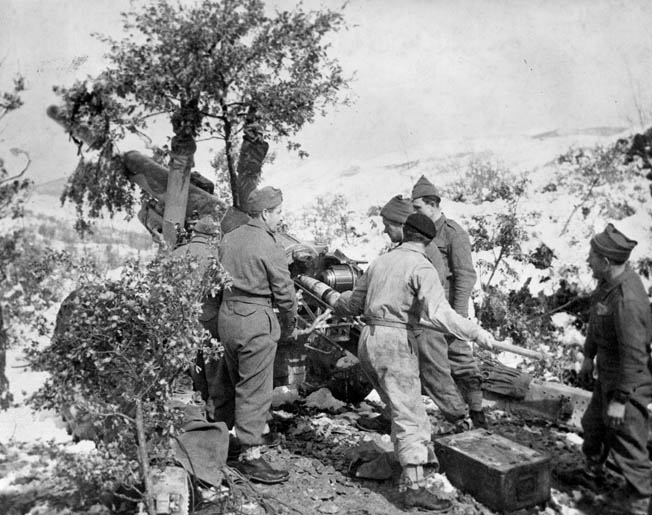
The corps staff began to formulate the battle plan. General Anders contributed extensively to the staff’s work. He drew certain conclusions from the previous Allied assaults and decided not to become bogged down in a street fight in the town. He rejected an assault from the south that was too exposed to German flanking fire. He decided to attack from the northwest between Hills 569 and 601. The 3rd Carpathian Division was responsible for seizing the southern end of Snakeshead Ridge, Massa Albaneta, Monte Castellone, and Hills 593 and 569. The 5th Kresowa Division had Colle Sant’ Angelo and Hills 575, 505, 452, and 447, and was then to cover the advance of the 3rd. Each division allotted one brigade for the initial attack. The plan utilized direct frontal assault into strong German positions. Capture of the high ground would isolate the abbey. To the Polish soldiers, who had wandered through Russia, the Middle East, and now Italy for five years since the defeat and subjugation of their country and people, the battle would be a chance to confront the hated Germans and regain their honor.
“The Spirit of Self-Sacrifice”
General Anders’ order of the day just before the assault on Cassino read: “Soldiers, The task assigned to us will cover with glory the name of the Polish soldier all over the world. The moment for battle has arrived. At this moment the thoughts and hearts of our whole nation will be with us. We have long awaited the moment for revenge and retribution over our hereditary enemy. For this action let the lion spirit enter your hearts, keep deep in your heart God, honor, and our land—Poland! Go and take revenge for all the suffering in our land, for what you have suffered for many years in Russia and for years of separation from your families.”
A postwar Polish veteran explained their motivation: “The spirit of self-sacrifice that had been manifested at the Battles of Grunwald, Chocim and Warsaw is passed on from generation to generation and constitutes the bedrock of Polish pride. The Poles entered the Battle of Cassino with the vision of a free Poland … carried in their hearts and minds. They joined the battle not because they were so ordered but because of their inner love for Poland and their hatred for the oppressor of their Motherland.”
Heavy Losses in the First Assault
For the night assault, the Polish troops blackened their faces and equipment and donned camouflage wraps.
A 40-minute barrage opened the assault. Immediately, the Poles caught an unlucky break. The Germans planned to relieve defenders with fresh units, and they had nine battalions in the strongpoints when the assault started. At 1 am, the 3rd Carpathian Rifle Division’s 1st Carpathian Rifle Brigade assaulted Point 593 (Mount Calvary on Snakeshead Ridge), Hill 569, and Albaneta Farm. The 1st Carpathian Battalion’s attack on Massa Albaneta failed with heavy losses, due mainly to German artillery. By 2:30 am, the assault battalions had lost one of every five men.
The 2nd Carpathian Battalion of the 1st Carpathian Brigade carried Point 593. Four counterattacks by German paratroopers, the final ending with bitter hand-to-hand fighting, left few Poles on the position at dawn. Forced to retreat, the entire 2nd Battalion numbered no more than a few dozen men. The 3rd Carpathian Battalion strike on Hill 569 also failed.
The 5th Kresowa Infantry Division’s 5th Wilenska Brigade jumped off a half hour after the Carpathian Brigade to seize Colle Sant’ Angelo, Hills 706, 601, and 575. The infantry ran into heavy fire. By 3 am, all three battalions were engaged along Phantom Ridge. The division commander, Brig. Gen. Nikodem Sulik, committed the 18 battalions of the 6th Lwowska Brigade to reignite the advance, but it was not possible to continue the attack.
The 13th and 15th Battalions of the 5th Wilenska Brigade were decimated. According to the brigade diary, “In the valley and on the slope of the ridge lay corpses, twisted human shapes, shattered limbs, bloody bits of bodies.” General Anders had no alternative but to terminate the assault.
The Poles had attacked with panache and skill but took heavy casualties. The Germans committed a horrific atrocity after the assault. Two young officer cadets were captured, and the Germans crucified them with barbed wire and nails. No quarter was given by either side from that moment on.
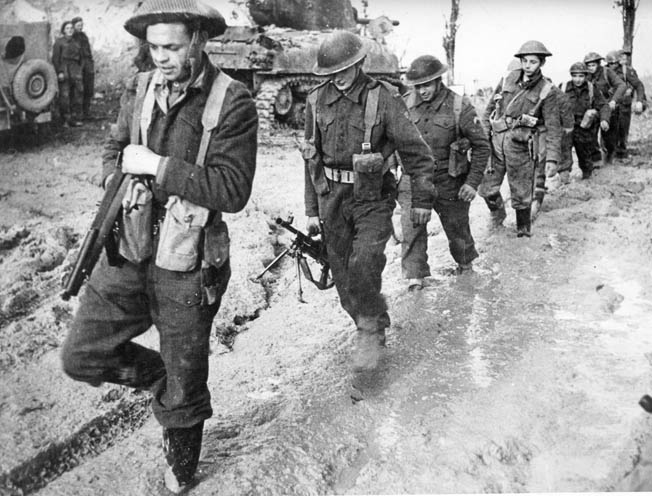
A Second Assault
The II Corps staff immediately began drawing plans for a second assault. Leese arrived and expressed satisfaction with the Poles’ attack because it was “of great assistance” drawing artillery fire and reserves away from the British. Anders used the same basic strategy, but this time the attack would be made by both entire divisions. Both brigades of the 5th Kersowa Division were directed on Colle Sant’ Angelo. The 3rd Carpathian Division focused both brigades on just Albaneta. The Poles concentrated their artillery support and planned a rolling barrage for the advancing infantry. Polish sappers and engineers cleared minefields and obstacles during the interim. Leese endorsed the entire endeavor.
The second assault jumped off at 10:30 pm on May 16. New brigades were leading the assaults, supported by 200 air sorties at daybreak. One observer wrote, “When the second attack began the soldiers were drained physically and psychologically. The issue hung on a knife edge, only vigorous leadership could overcome the exhaustion and inertia.” Fighting raged all night.
Lance Corporal Dobrowski of the 5th Battalion described the assault on Hill 593: “We begin to ascend Hill 593, the weakest soldiers can no longer keep pace. We are in no particular formation. No sections; no platoons. The situation is such we must use our own initiative. Now we engage the enemy. All is confusion and the Germans’ positions are mixed with ours. With munificent impartiality we hurl our hand grenades. From the neighboring heights Spandaus, Schmeissers and heavy machine guns catch us in a murderous crossfire.” The hill was taken and held.
Capturing the Monastery
The divisions seized the initial objectives on Phantom Ridge and Snakeshead Ridge then moved on to Hills 601, 575, 505, and 569. By May 18, the Poles had seized the objectives. The French Expeditionary Corps breakthrough south of Cassino forced the German Tenth Army to order the withdrawal of the 1st Parachute Division from Monte Cassino.
The Poles intercepted the radio message but were too weary to pursue the paratroopers. Corps headquarters sent word to the 3rd Carpathian Division to send a patrol from the 12th Podolski Lancers Reconnaissance Regiment to scout the abbey. The scouting party, led by Lieutenant Casimir Gurbiel, entered the ruins of the abbey and found them empty except for a few wounded German paratroopers. A homemade regimental pennant was raised at 9:50 am above the ruins. A Lancer bugler played the medieval Polish military signal, the “Krakow Hejnal.” When the notes were heard in the 4th Carpathian Battalion’s command post, officers and enlisted men unashamedly cried.
A Polish officer wrote in his diary about that occasion. “We hung on grimly until the exciting news arrived that the monastery was in our hands. I shall never forget the pure joy of that moment. We could hardly believe that our long task was done.”
General Anders walked up to the abbey late in the afternoon. He recounted the moment in his postwar memoirs. “The battlefield presented a dreary sight. Corpses of Polish and German soldiers, sometimes entangled in a deadly embrace, lay everywhere, and the air was filled with the stench of rotting bodies. There were overturned tanks with broken caterpillars. Crater after crater pitted the sides of hills and scattered over them were fragments of uniforms, helmets, tommy guns, Spandaus, Schmeissers and hand grenades. The slopes of hills where fighting had been less intense were covered with poppies in incredible number, their red flowers weirdly appropriate to the scene.”
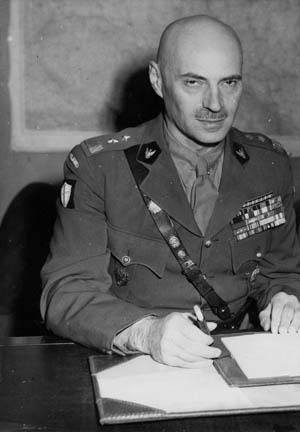
An Honorary Decoration For the Polish II Corps
The Poles continued fighting until May 25, by which time the positions of Saint Angelo Hill, Point 575, Passo Corno, and Mount Cairo were captured. The Polish II Corps lost 50 men a day, about 20 percent of its strength, by the end of the Cassino battle. The Poles immediately attacked east to penetrate the Hitler Line before the Germans could man it.
Through Operation Diadem, the capture of Rome, and the advance beyond the Italian capital, the Allied forces were heavily battered. The British and Canadian rifle companies had 30 percent casualties. The American casualty rate was 41 percent, but the Polish II Corps had the highest with 43 percent, sustaining 3,784 casualties of which 860 were killed. Field Marshal Bernard Montgomery wrote after the war, “Only the finest troops could have taken that well-prepared and long-defended fortress.” Immediately after the battle, General Charles de Gaulle commented to the press, “The Polish Corps lavished its bravery in the service of its honor.”
The Polish II Corps received an honorary decoration after Cassino. Eighth Army Order No. 65 granted the right of all individuals who took part in the Cassino operation to permanently wear the Eighth Army shield on their right shoulder even if in the future they were no longer part of the Eighth. Later, Order No. 95 extended the privilege to any soldier of the Polish II Corps.
Deception at the Battle of Ancona
After the battle at Cassino, the Polish II Corps shifted to the Adriatic coast. On June 15, 1944, the 3rd Carpathian Rifle Division replaced the 4th Indian Division. The entire sector came under Anders’ command. The Polish corps headquarters was located at San Vito near Ortona. Additional British regiments and Italian units bolstered the strength of the corps. The 17th and 26th Heavy Artillery Regiments, Royal Artillery, the 7th Queens Own Hussars, and the Italian Corpo Italiano de Liberazione came under the Polish II Corps. The 5th Kresowa Infantry Division arrived between June 18 and 21, followed by the corps artillery and the 2nd Armored Brigade.
The Battle of Ancona took place from June 16 through July 18, 1944. The Polish objective was the capture of Ancona harbor. Anders’ orders to his units were simple, direct, and aggressive. “Pursue the enemy at the highest possible speed and capture Ancona harbor.”
Anders also deceived the Germans. He created the impression that the 3rd Carpathian Division would attack along the coast road. Instead, he launched the 5th Kresowa and the 7th Hussars on an encircling sweep inland. Anders performed a series of feints, radio deception, and skilled maneuver, unhinging the German 278th Division. Supported for the first time entirely by air attacks by the Polish City of Gdansk No. 318 Squadron, the Poles moved rapidly up the Adriatic coast and crossed the Aso River by June 20. Assisted by Italian Alpini, the Poles captured Fermo and Pedaso on June 21. By the 25th, the Polish II Corps faced the German LI Mountain Corps, and stiff resistance held up the Polish offensive around the Chienti River.
Breeching the Gothic Line
In July, the Polish corps began rolling again, capturing Numano on July 5 and Osini, only 10 miles south of Ancona, the following day. The Poles repulsed a counterattack by the mountain troops on July 8, and took Monte Palesco two days later. After a fierce battle, Ancona was captured by the Carpathian Lancers on July 18. The 3rd Carpathian Division secured the port and 2,500 prisoners. This was the only battle in the West that was exclusively carried out by the Polish military. The offensive cost the Poles 2,150 casualties.
On July 19, the Poles crossed the Esino River and encountered strong German opposition near Ostra. On the 22nd, they reached the Misa River. The Germans placed the 71st Infantry Division and the Poles’ old adversary, the 1st Parachute Division, along the river. It was another 10 days before the Polish force reached the next river, the Misa. A five-day struggle ended with the capture of Ostra, and the corps advanced to the town of Senigallia.
On August 11, the Cesano River was crossed, and the Poles seized a series of towns, Gabrielle, Mondolfo, Poggio, and Orciano. Ten days later, the Poles crossed the Metauro River and reached the Gothic Line.
The Allies now reorganized their forces before the assault on the Gothic Line. The Polish II Corps was on the extreme right flank at the Adriatic coast with the 1st Canadian Corps on its left. Operation Olive, the breakthrough in the Adriatic sector, began on the night of August 25. The Polish II Corps opened the offensive, capturing the high ground north of the resort of Pesaro. The corps’ fighting lines stretched seven miles inland from the coast with its two divisions advancing abreast.
Historian Thomas Brooks described the assault. “The Poles were under-strength and again lacked replacements. They went in without preliminary artillery barrage. The infantrymen waded through water almost three feet deep up into the olive groves on the far side. At midnight, shells rained down four hundred yards ahead of the advancing troops moving forward at the anticipated rate of a hundred yards every six minutes. The Poles inflicted heavy damage on a German parachute regiment caught out in the open in the act of withdrawing. By dawn the divisions were well across the river and into the hills before Foglia.“
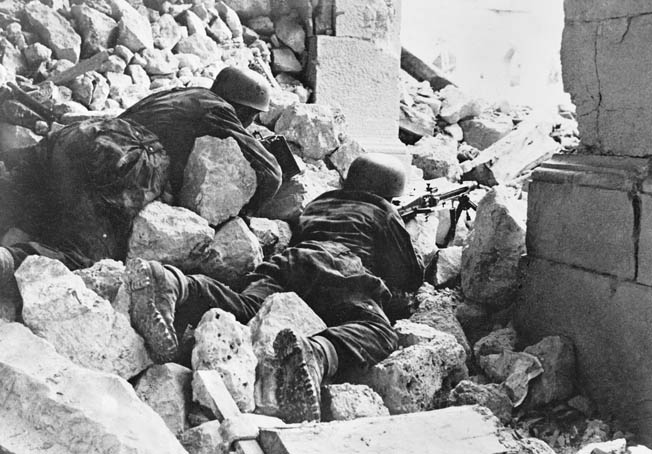
The night attack by the Polish II Corps, Canadian I Corps, and the British V Corps caught the Germans flat footed and pierced the eastern flank of the Gothic Line.
Fighting in the Appenines
Its task complete, the Polish II Corps now withdrew to become a reserve force. On the 26th, Anders met Prime Minister Churchill, who visited the Polish headquarters. Anders tried to warn Churchill about Stalin, six months before the Yalta Conference. He told Churchill, “Stalin’s declarations that he wants a free and strong Poland are lies and fundamentally false.”
Anders spoke of the Katyn Massacre, in which the Soviets murdered Polish officers and civilian officials, and then mentioned the situation with the Red Army at the gates of Warsaw. “We have our wives and children in Warsaw, but we would rather they perish than have to live under the Bolsheviks.”
Churchill replied, “I sympathize deeply. But you must trust us. We will not abandon you, and Poland will be happy.”
Between October 1944 and January 1945, the Polish II Corps was reinforced and reorganized. The 3rd Carpathian Rifle Division and the 5th Kresowa Infantry Division had the 3rd Carpathian Rifle Brigade and the 4th Wolynska Rifle Brigade added, respectively. The 2nd Armored Brigade was expanded into an armored division with the addition of the Carpathian Lancer Regiment, 2nd Motorized Commando Battalion, 16th Pomorska Infantry Brigade, 4th Armored Regiment Skorpion, 1st Krechowieckich Lancer Regiment, and the 6th Armoured Regiment Dzieci Lwowskich.
After a short period of rest, the Polish II Corps returned to the battlefield and occupied Predappio, the birthplace of Benito Mussolini, and Castrocaro on October 27. The Poles bypassed Faenza and crossed the Lamone River on their way to the Senio River. As the rain, mud, and snow arrived in November, the Polish II Corps pushed through the Appennine foothills south of Highway 9. The Polish troops captured Monte Caselo and Lamone in November and Brisighella on December 6. All operations in the region ceased by the end of December 1944.
“The operations of the Polish II Corps in the Emilian Apennines had needed strenuous effort by the men, who, battling the hills or paddling in mud, fought, attacked, and pushed back the enemy,” wrote Anders. “There were no spectacular achievements; it was just a case of steady relentless fighting, and duty well done. The Corps’ losses in these battles amounted to 42 officers and 627 other ranks killed, 184 officers and 2,630 other ranks wounded, and 1 officer and 32 other ranks missing.”
General Richard McCreery, the new Eighth Army commander, recognized the Polish effort in a signal to Anders on December 17: “My best congratulations to you and the 3rd Carpathian Division on your successful operations in difficult country. This attack with the great lack of roads in your area was a fine achievement. Engineers and gunners deserve every credit.”
The Yalta Betrayal
In January 1945, the Italian front was at a standstill. The Eighth Army, after a series of hard-fought river crossings, stood on the banks of the Senio River. The country was sodden from winter rains, and armored operations were impossible.
International events and foreign policy would now impact the Italian campaign. Anders learned of the terms agreed by Roosevelt, Churchill, and Stalin at Yalta. He wrote a letter to General McCreery saying, “I can see but the necessity of relieving those of my troops now in line. We had marched thousands of miles together and had suffered thousands of casualties. We had come from the torture of the Russian labor camps to the brink of battle which would seal our claim to be allowed to go home. Suddenly we are told, we were told, without ever being consulted that we had no home to go to.”
In early March 1945, McCreery, American General Mark Clark, and British Field Marshal Harold Alexander met Anders, who told them, “How can I ask my soldiers to go on fighting, to risk their lives for nothing. I must withdraw them from the line.”
General Clark replied, “I know the great confidence the Polish soldiers have in their commander, and I also know that they would accept any decision coming from you without hesitation. “
McCreery added, “If you took your troops out of the line, there would be no troops to replace them, and a 10 mile gap would be opened up.”
Anders remained silent for a minute, reflecting that the Polish removal might negatively impact the Allied victory in Italy and also forfeit the Polish claim to be an independent nation. Anders quietly but firmly said, “You can count on the Polish II Corps for this coming battle. We must defeat Hitler first.”
Later in the week, the Polish troops learned that Churchill was to speak to them by radio. Vladyslaw Karnicki, a veteran soldier, remembered what Churchill said. “He said he had to give up a part of Poland because of the Curzon Line. When we looked it up on a map, the meaning became clear. The Anglo-American leaders had given Stalin that part of Poland which was the homeland of the Polish II Corps. He then concluded by saying that after the war if you wished to go home you may, but if you chose not to, England would welcome you with employment and homes. The men were immediately bitter and one sergeants said, ‘Why the hell are we fighting now? We have no country to go to.’ The Colonel stepped in and showed us pictures of England and London which he had visited. He said how good the country and people were. I acclaimed that’s for me, I’m not going to the Russians.”
Although most of the men decided to settle in Britain, the Poles did not show the aggressive spirit in the remaining combat.
The Last Italian Offensive
The final offensive to break the stalemate on the Italian front was scheduled for the night of April 9, 1945. The Eighth Army objective was to break through the Po Valley and seize the cities of Bologna and Florence. The Polish II Corps was assigned the direct assault across the Senio River straight to Bologna.
The 3rd Carpathian Rifle Division spearheaded the attack across the Senio, north of the Via Emilia (Highway 9) toward Bologna. The corps struck the boundary between the German 98th and 26th Panzer Divisions. The Poles closed in on Imola, 15 miles from Bologna, and by April 14 that town was captured. At this point the Poles were confronted by their old enemy, the German 1st Parachute Division. The Polish attack was so successful that the German division disintegrated.
The Poles captured the 1st Parachute Division’s battle flag, and on the morning of April 21, the 3rd Carpathian Rifle Division entered Bologna ahead of the American 34th Division. The German flag was eventually presented to General Anders as a trophy. The Polish victory was honored by a congratulatory letter from McCreery, who wrote, “You have shown a splendid fighting spirit, endurance and skill in this great battle. I send my warmest congratulations and admiration to all ranks.”
Another British politician, Foreign Secretary Harold Macmillan, publically renounced his prior view of the Polish II Corps. In an open letter he wrote, “I have underestimated the marvelous dignity and devotion of Anders and his comrades. They fought with distinction in the front of attack in the last battles of April. They had lost their country but they kept their honor.”
The liberation of Bologna ended 14 months of Polish II Corps operations during the Italian campaign. Today, 1,432 soldiers of the II Corps rest in the Polish War Cemetery in Bologna-San Lazzaro di Savena, the largest of four located in Italy.
In May 1945, the corps consisted of 55,780 men and approximately 1,500 women in auxiliary services. There was also one bear, named Wojtek. The majority of the forces were composed of former citizens of eastern Poland. During 1944-1945, the Polish II Corps fought with distinction in the Italian campaign, losing 11,379 men. Among them were 2,301 killed in action, 8,543 wounded, and 535 missing.
The Polish Army After the War
After the war, Polish divisions remained in Italy near Ancona, providing care for displaced Polish refugees. They continued to train because they expected a war between the Western powers and the Soviet Union. The total establishment of the Polish II Corps in mid-1946 was down to 103,000 personnel. In August 1946, two divisions were transported to Britain and demobilized. The 3rd Carpathian Rifle Division remained in Italy as part of the occupation forces. Because of the Soviet occupation of Poland, most of the Cassino veterans never returned to their homeland. Inexplicably, the Poles were not allowed to participate in the massive victory parade in London.
Ten members of Parliament signed a letter published in the Daily Telegram in June 1946, objecting to the treatment of the Poles. The letter read, “Polish dead lay in hundreds on Monte Cassino. The Poles fought at Tobruk, Falaise, and Arnhem. Polish pilots shot down 772 German planes. The Polish Forces who fought under British command have not been invited to the Victory March June 8. Ethiopians will be there, Mexicans will be there, the Fiji Medical Corps, the Labuan Police and the Seychelles Pioneer Corps will be there—and rightly too. But the Poles will not be there.
In 1947, the Carpathian division was moved to Britain and housed at Hodgemoor Camp, Chalfont St Giles, and Buckinghamshire. It maintained a presence there until 1962.
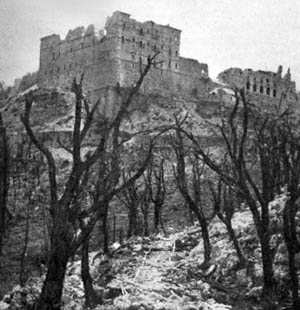
Anders, a staunch anticommunist, remained in Britain. The Polish communist government stripped him of his Polish citizenship. He died in exile in 1970. His citizenship was reinstated posthumously in 1989, with the formation of a democratic government in Poland under Lech Walesa. Anders also received the title of Commander of the Legion of Honor from the new government. In accordance with his will, he was buried among his soldiers in the Polish military cemetery at Monte Cassino.
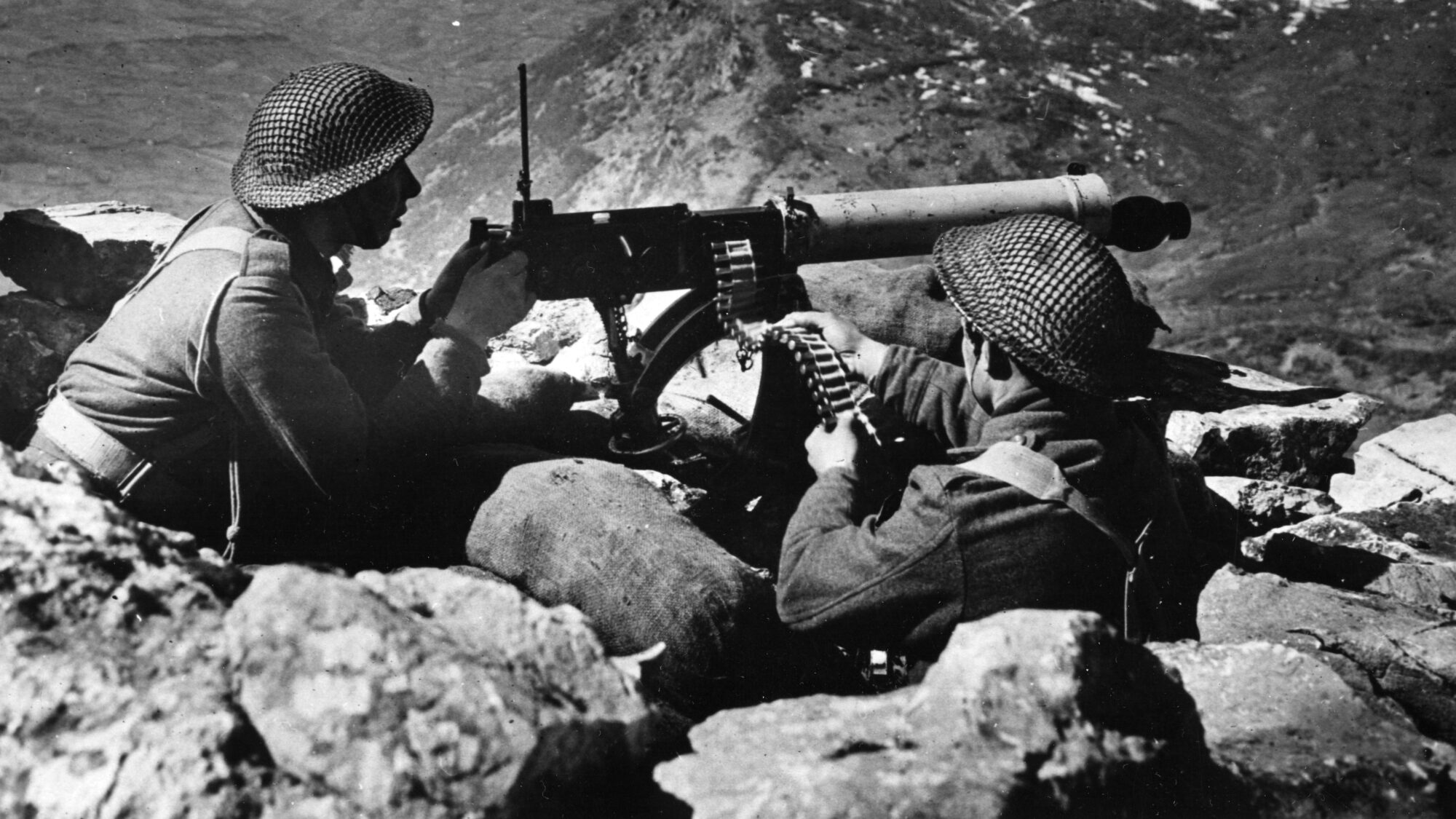
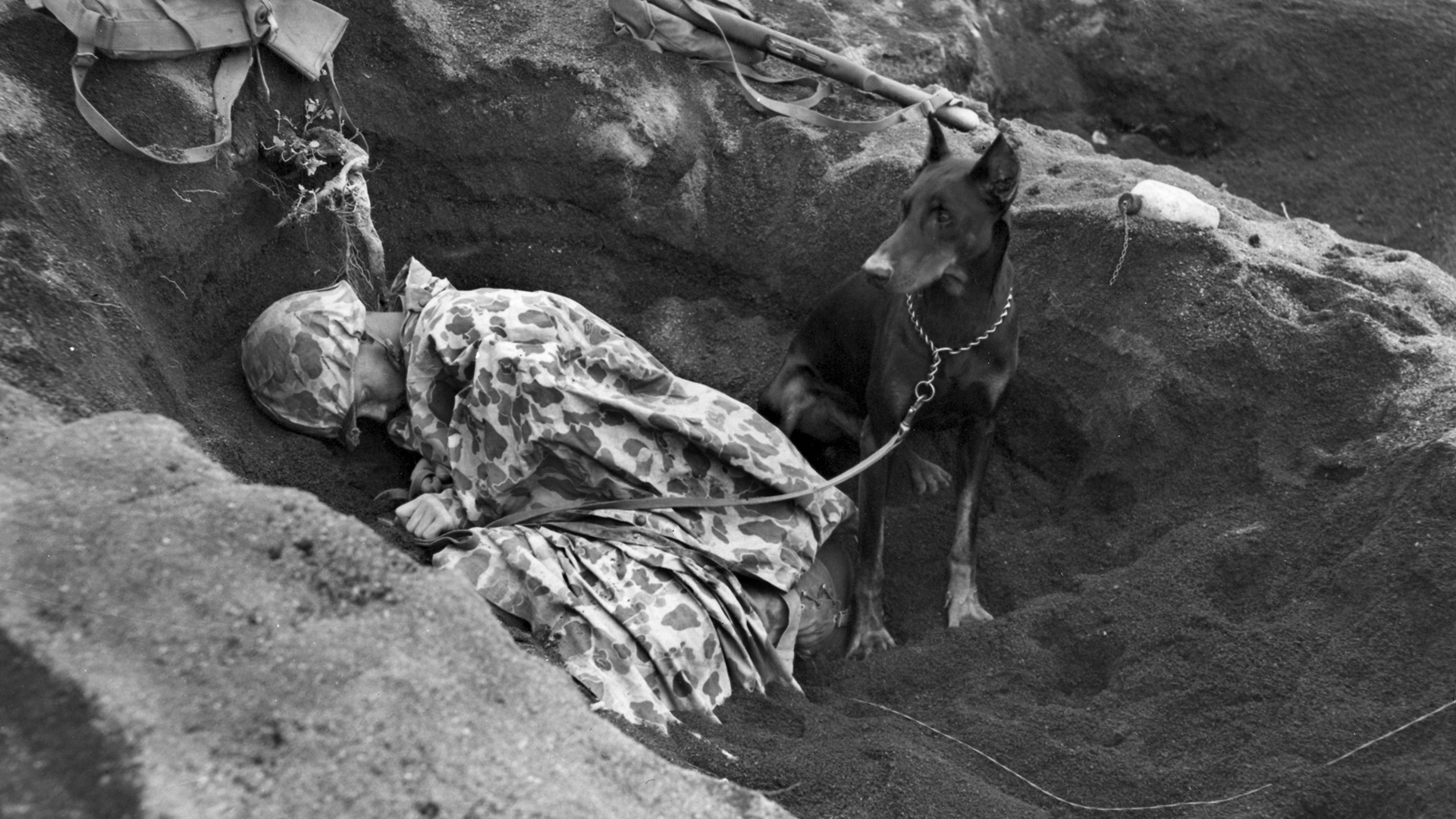
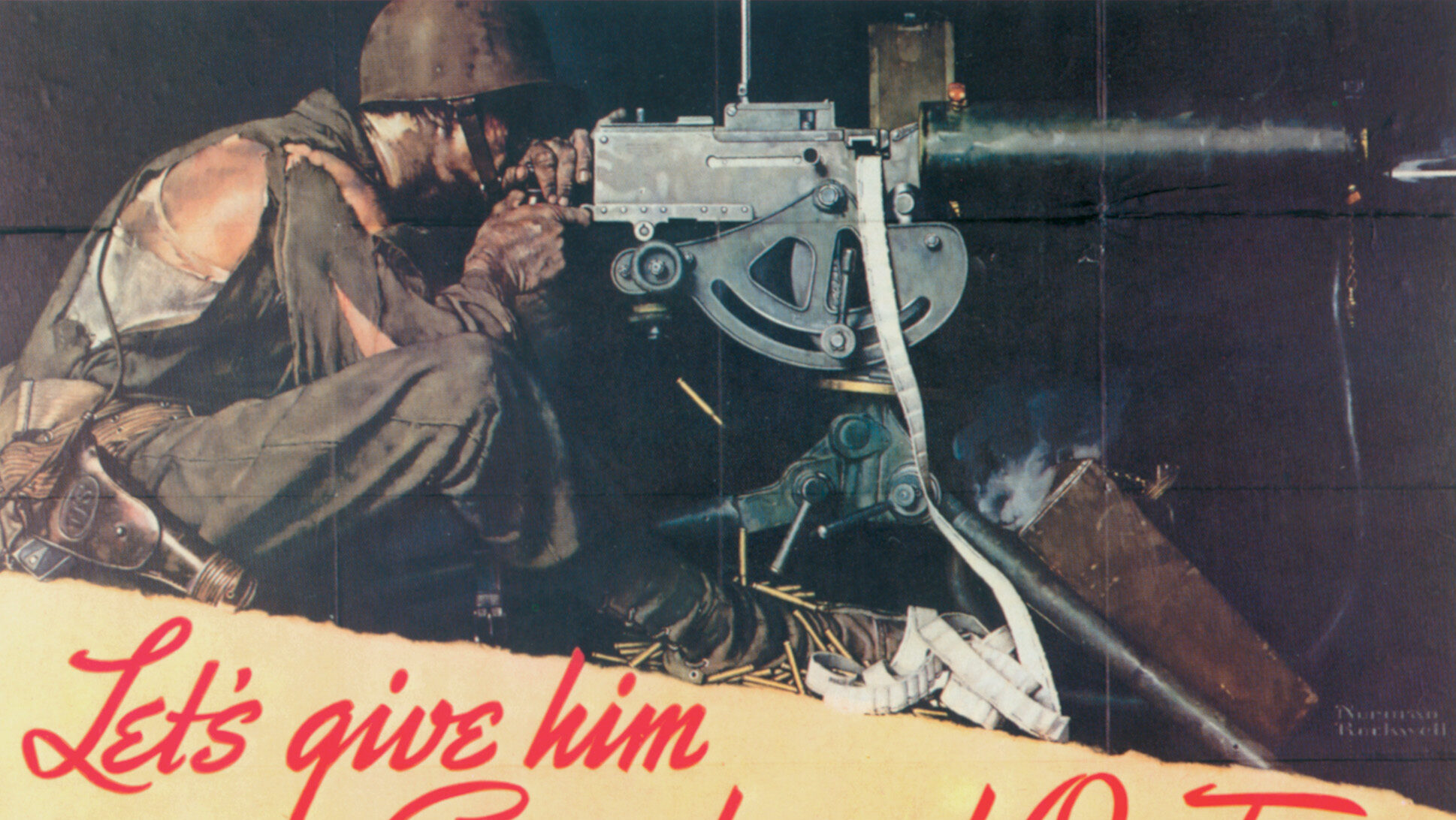
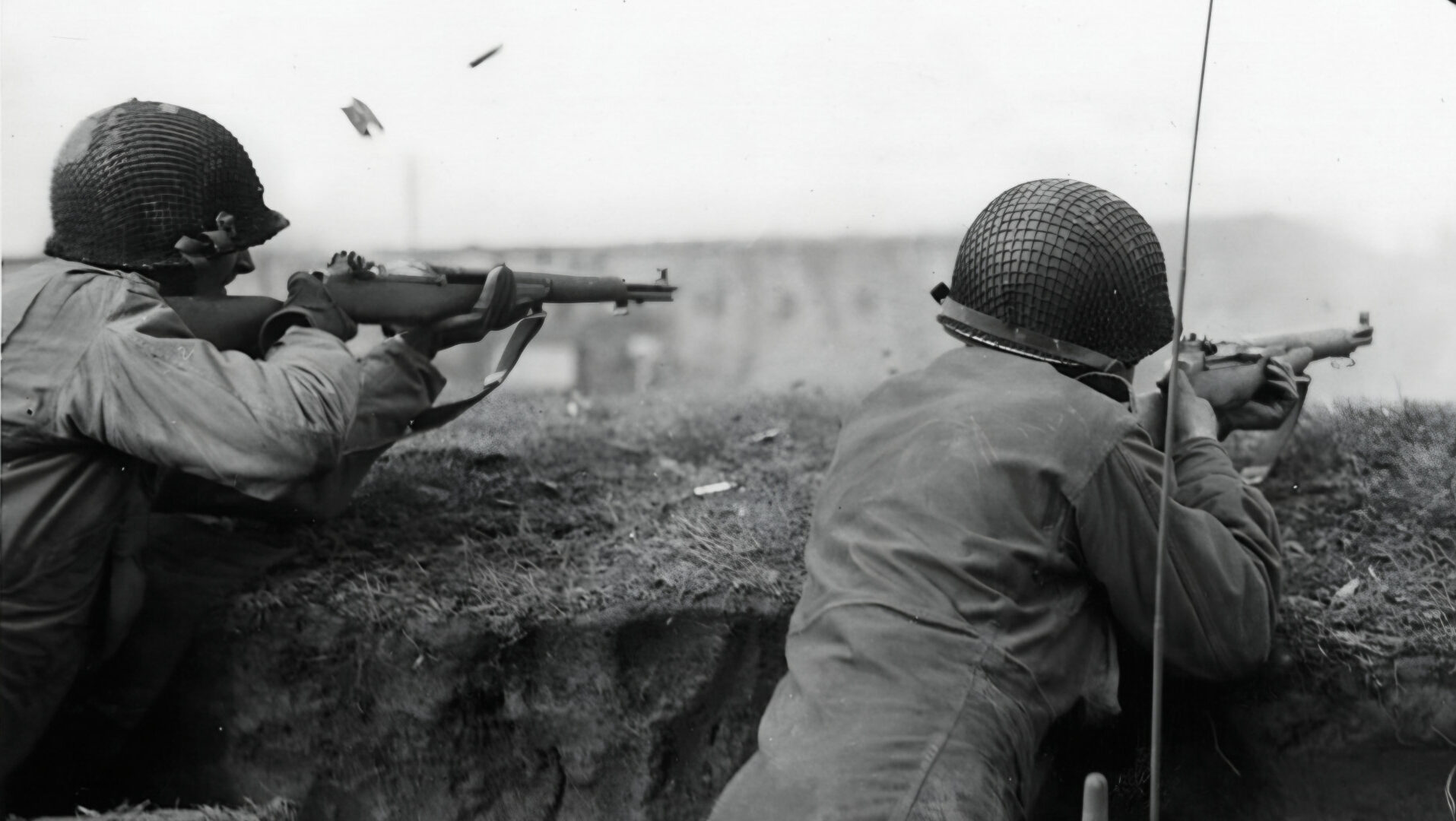

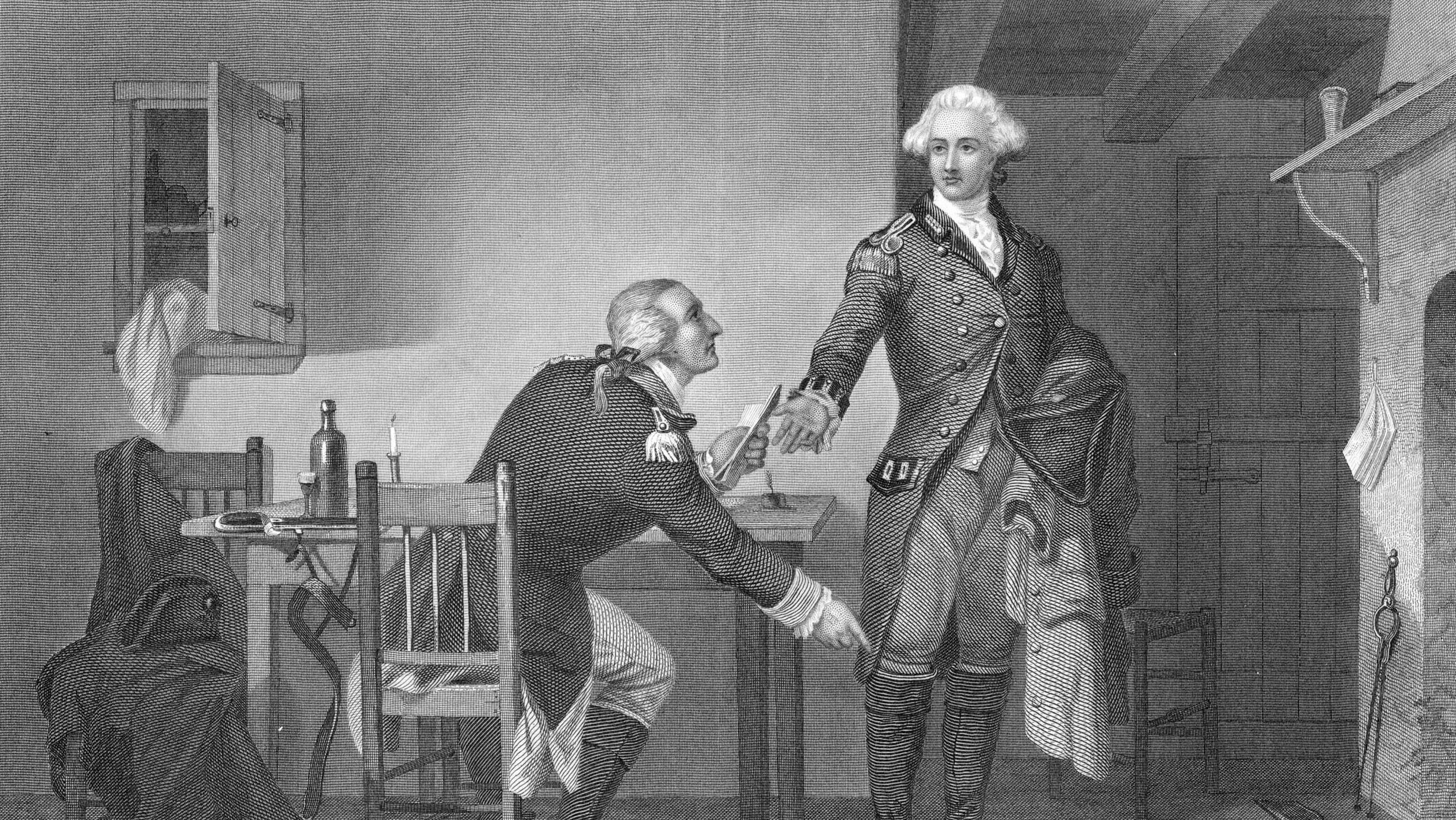
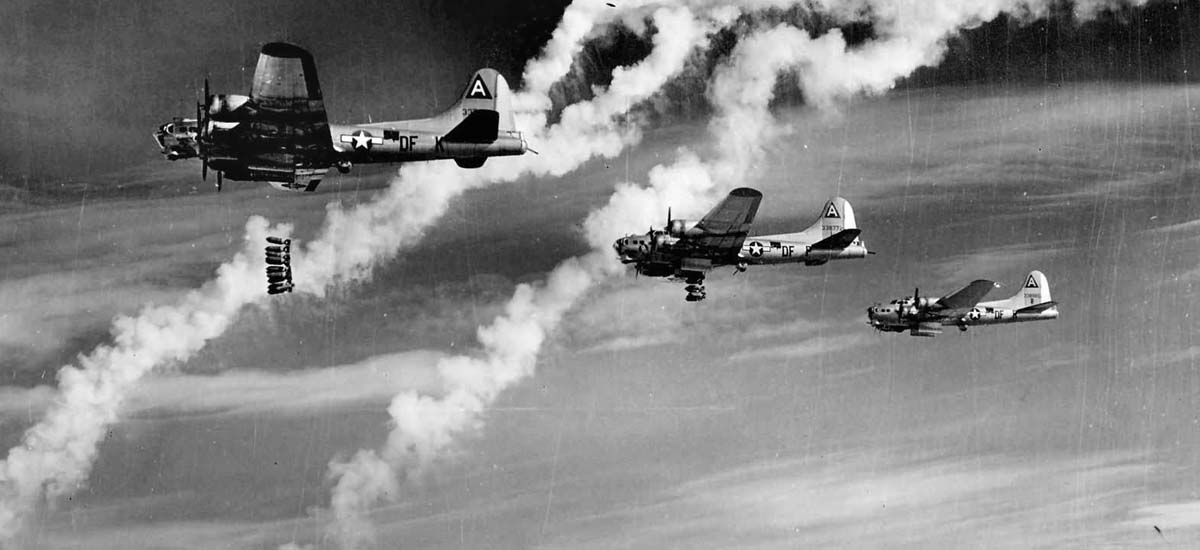
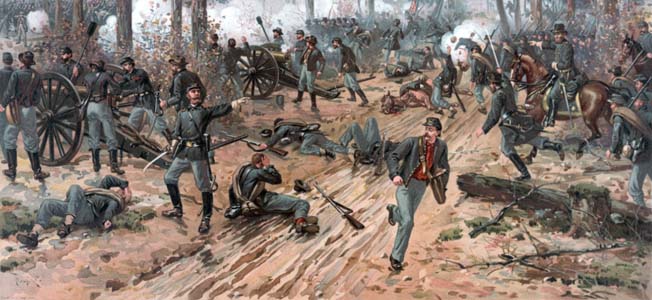
A very interesting article. I wasn’t aware of such an important role that they played.
I understand that when it became impossible for them to return to Poland, land was promised to them in Italy so that they could form a colony there.
A set of stamps was prepared for this new colony.
The promise was later withdrawn and the stamps never used.
What a very interesting articel, well and readable written!
I have some stuff of a polish vetran of world war two. When i look at his badges, i think he serverd under general anders in de second polish corps, 2nd armored division…
Do you have any idea how i can find some warrecords about the service of this specif soldier?
I see forward to you reaction!
Greets, Erik Jan (Netherlands)
A tribute to the forgotten Poles that suffered so many years of devastation both from nazis and comunists. They had to wait fifty years, always fighting as in Cassino, to recover their country and dignity.
Wojtek the bear ended up in Edinburgh Zoo, after the 22nd Polish Company was disbanded in Scotland, in 1947. He died in 1962, at the age of 22. There is a life-size bronze statue to him in Princes Street Gardens, Edinburgh, which also serves as a war memorial to Polish soldiers.
Anyone interested in reading a more comprehensive history of the Polish Armed Forces in World War II should acquire a copy of “Poland in the Second World War” by Jozef Garlinski, published by Hippocrene Books. Among other topics it highlights the contributions of Polish forces fighting within the Soviet Union’s army. One such unit fought all the way to the vicinity of the Tiergarten in Berlin in May of 1945.
There are yet many stories to say about the Monte Cassino Battle and the lives of the Polish militaries that served devotedly under General Anders. Their stories will never be told unfortunately and sadly!